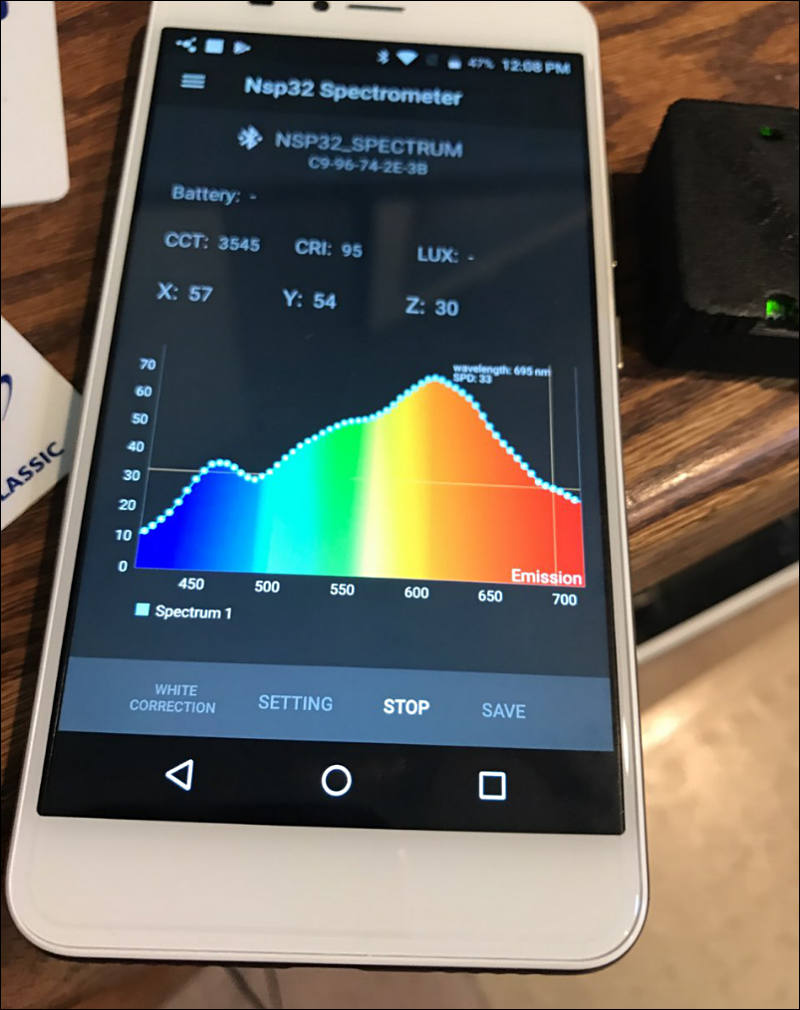
-
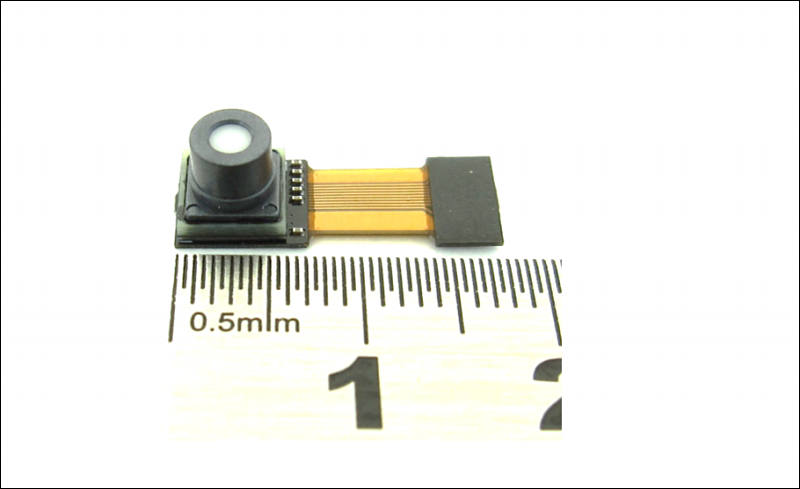
The NSP32-V1 spectrometer uses a 1024 pixel, 32 x 32, nano-optical filter array to measure the light spectrum, based on a technological breakthrough, the plasmonic filter. This is a metal film perforated with subwavelength hole arrays. It is manufactured within the metal layer of the silicon die, giving a monolithic solution.
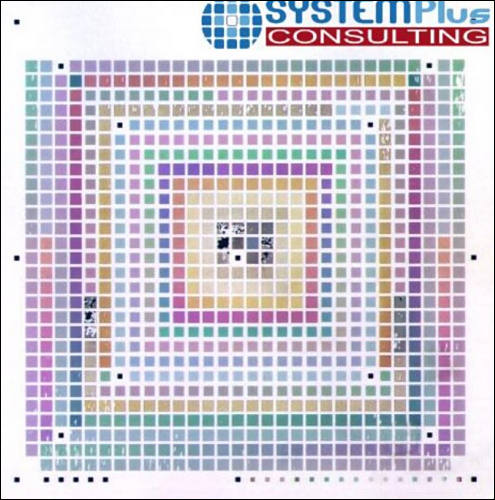
The 100μm-high sensor die is assembled in an advanced ball grid array (BGA) package with an optical window for only 500μm height. The other optical parts, the lens and the diffuser, are assembled in a 5.7mm-high module. The module is very small overall, at just 6mm x 6mm x 5.3mm.
Measurements
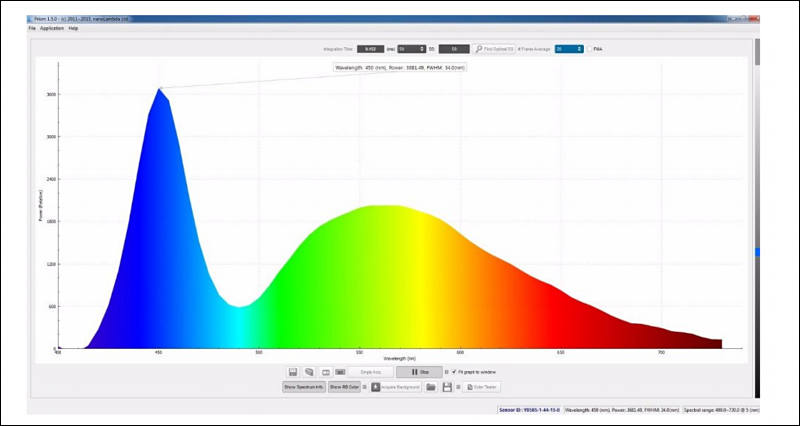
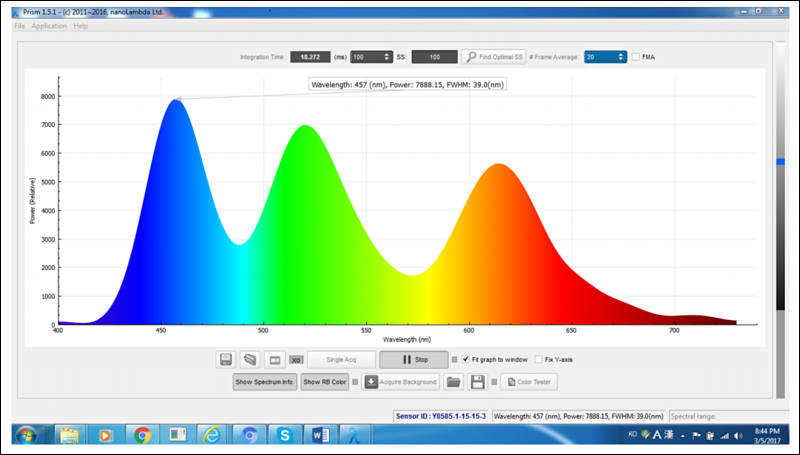
Site - https://nanolambda.myshopify.com/products/nsp32-w
ADK
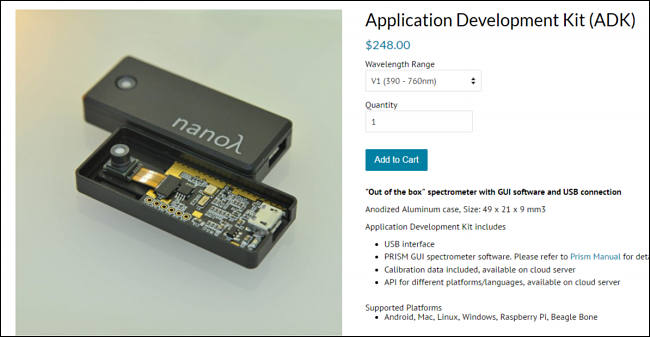
https://nanolambda.myshopify.com/products/application-development-kit-2-adk2
-
Well, it all may change.
Now they make Bluetooth version.
None of portable spectrometers are actually cheaper still.
-
I may have found a new option. If you search eBay for "Thunder Optics SMA" or "Thunder Optics USB" there are two small USB spectrometers, the tiny USB one is ~70USD and the larger one with optical fiber connection is 150USD. They look somewhat crude but I think may be fine for seeing quality of video light. Thinking of getting one to test out but I don't have access to a "fancy" Spectrometer to compare with.
-
Stay away from all such.
Thing discussed in this topic come calibrated (and USB version has calibration file on server).
Plus it is really useful for real life applications and has normal mobile app.
Your referenced spectrometer is mostly just nice toy and very hard to use (uses usual consumer CMOS sensor, cheap components and such).
-
Is this still the best and most affordable option? What is the accuracy of this spectrometer?
-
Accuracy is good if you apply it to proper field.
It is clearly not best idea to use it to measure spectrum with lot of sharp peaks.
Howdy, Stranger!
It looks like you're new here. If you want to get involved, click one of these buttons!
Categories
- Topics List23,992
- Blog5,725
- General and News1,354
- Hacks and Patches1,153
- ↳ Top Settings33
- ↳ Beginners256
- ↳ Archives402
- ↳ Hacks News and Development56
- Cameras2,367
- ↳ Panasonic995
- ↳ Canon118
- ↳ Sony156
- ↳ Nikon96
- ↳ Pentax and Samsung70
- ↳ Olympus and Fujifilm101
- ↳ Compacts and Camcorders300
- ↳ Smartphones for video97
- ↳ Pro Video Cameras191
- ↳ BlackMagic and other raw cameras116
- Skill1,960
- ↳ Business and distribution66
- ↳ Preparation, scripts and legal38
- ↳ Art149
- ↳ Import, Convert, Exporting291
- ↳ Editors191
- ↳ Effects and stunts115
- ↳ Color grading197
- ↳ Sound and Music280
- ↳ Lighting96
- ↳ Software and storage tips266
- Gear5,420
- ↳ Filters, Adapters, Matte boxes344
- ↳ Lenses1,582
- ↳ Follow focus and gears93
- ↳ Sound499
- ↳ Lighting gear314
- ↳ Camera movement230
- ↳ Gimbals and copters302
- ↳ Rigs and related stuff273
- ↳ Power solutions83
- ↳ Monitors and viewfinders340
- ↳ Tripods and fluid heads139
- ↳ Storage286
- ↳ Computers and studio gear560
- ↳ VR and 3D248
- Showcase1,859
- Marketplace2,834
- Offtopic1,320


